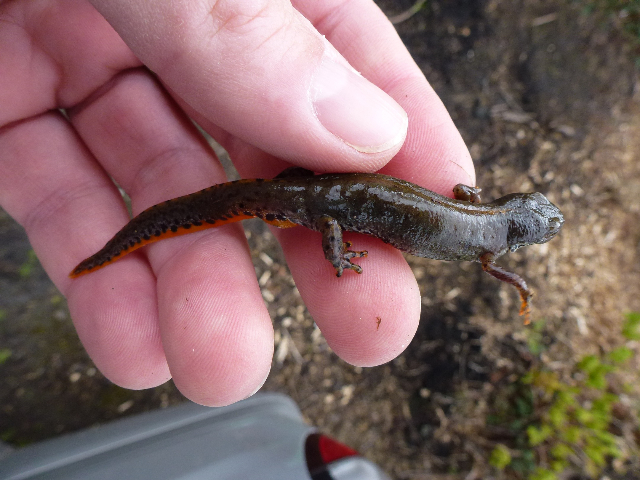Britain's freshwater environments are host to many invasive alien species, from amphibians to plants, crayfish to fungus. Today saw the deadline of a Europe-wide consultation on how we should deal with them.
The consultation's aim was to help develop acceptable legislation on preventing species invasions, dealing with those that have already taken place, and perhaps punishing the perpetrators. And how timely this review is.
Just last week, CGO Ecology was performing a great crested newt survey for a development in the south of England, when an alpine newt turned up in a bottle-trap. Suddenly a decision had to be made on what to do with the newt, a strikingly-attractive male: release it, keep it, or kill it.
Anyone au-fait with wildlife law in the UK will know that it is illegal to deliberately release any alien plant or animal (or allow it to escape) into the wild. Offences under Section 14 of the Wildlife and Countryside Act carry minimum penalties of £5,000-40,000, and six months in prison.
Yet few people would know what to do if they caught an alpine newt in a pond net or bottle-trap, or some New Zealand pigmyweed for that matter. The fact is that it is illegal to release them once caught.
In this case, the alpine newt in question was given to a secure and reliable captive home. Coincidentally the new owner had unwittingly caught an alpine newt during a professional newt survey elsewhere in southern England the day before! Just how fast are they spreading?

An added worry is the discovery that alpine newts are a carrier of chytrid fungus, the pathogen that is wiping out amphibian populations in some parts of the world.
The time is surely here for some formal guidance from Defra or the country agencies, and perhaps from IEEM. In the meantime, how many surveyors are keeping quiet about alien bycatch, in order to avoid the legal ramifications of re-release?
Photos: male alpine newt (top right), female alpine newt (bottom left). Both sexes has a bright orange belly, and bold ventro-lateral speckling. Males have a bright blue ventro-lateral tinge.

